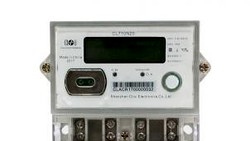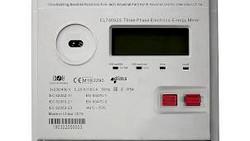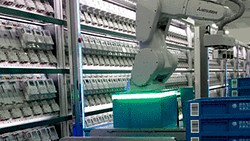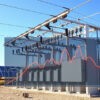In the utility sector, the humble electricity meter is often overlooked—until it isn't. For engineers and decision makers, it's much more than a box on the wall: it's the backbone of billing, grid management, and customer trust. But as sustainability moves from boardroom buzzword to operational necessity, the meter's own environmental footprint is under the microscope. The new generation of meters isn't just about precision and connectivity; it's about minimizing impact from cradle to grave—without compromising performance or longevity.
Why Eco-Design Matters for Utilities
Utilities are under pressure from all sides: tighter regulations, rising customer expectations, and the simple arithmetic of resource scarcity. The EU's Ecodesign Directive and similar international standards are raising the bar for energy efficiency, material use, and recallability. With millions of meters deployed in a single rollout, even small improvements in design can add up to major environmental and financial benefits.
The Building Blocks of Sustainable Metering
Material Innovation
Modern meters are moving away from virgin plastics and rare-earth-heavy components. Recycled polymers (like rPP, rABS, rPC) and bio-based plastics are now robust enough for outdoor use, meeting mechanical and UV stability requirements. Manufacturers are also reducing hazardous substances, going beyond RoHS compliance to phase out halogenated flame retardants where possible. Smaller, smarter PCBs and multi-chip modules cut down on material use, and the industry is actively seeking alternatives to rare-earth magnets in current sensors.
Extended Lifespan and Repairability
A meter that lasts 20 years instead of 10 isn't just good for the planet—it's good for the budget. Robust enclosures, corrosion-resistant finishes, and high IP ratings are now standard. Modular designs allow for easy upgrades: swap out a communication module, not the whole meter. Over-the-air firmware updates extend functional life and keep meters secure without truck rolls or landfill trips.
Lower Self-Consumption and Energy Efficiency
This is where the numbers get interesting. Modern meters use ultra-low power microcontrollers and ASICs, with dynamic power management that puts unused circuits to sleep. Communication protocols are optimized to avoid unnecessary data chatter. Saving 0.5 VA per meter may sound modest, but at scale, it's a game changer. For a rollout of 10 million meters, that's 5 million VA—roughly 4.25 MW of continuous power saved. Over a year, that's about 37 GWh—enough to supply a small city, or to avoid the emissions from thousands of tonnes of coal.
End-of-Life and Circularity
Eco-design isn't just about the start of a meter's life. Disassembly-friendly designs, clear material labelling, and partnerships with certified recycling schemes ensure that meters can be responsibly recycled or repurposed. Avoiding inseparable composites and using standardized plastics improves recycling yields and keeps valuable materials in the loop.
CLOU's Commitment to Sustainable Metering
At CLOU, our R&D team is passionate about pushing the boundaries of eco-design. We're constantly evaluating new materials, refining our modular architectures, and developing ultra-low power electronics. Our engineers love nothing more than a challenge—whether it's squeezing another tenth of a volt-ampere from our designs or finding a new way to make a meter easier to recycle. We believe that every meter should be built to last, easy to upgrade, and as gentle on the planet as it is on your operating budget. And yes, we're even known to run the occasional "who can design the greenest PCB" contest in the lab—strictly for scientific purposes, of course.
The Utility Payoff: More Than Green Credentials
Adopting eco-designed meters isn't just about ticking a sustainability box. The benefits are tangible:
- Lower Total Cost of Ownership: Longer lifespans and lower self-consumption mean fewer replacements and lower energy bills.
- Regulatory Compliance: Staying ahead of evolving standards reduces risk and can unlock incentives.
- Brand and Customer Trust: Utilities that invest in sustainability build stronger relationships with customers and regulators.
- Operational Resilience: Reduced reliance on critical raw materials and robust, repairable meters mean fewer headaches when supply chains get tight.
Collaboration Is Key
Sustainable metering isn't a solo project. Utilities, manufacturers, standards bodies, and testing institutes all play a role. Clear procurement specs, transparent environmental product declarations, and robust third-party verification are essential for real progress.
Takeaway
Eco-design is no longer a niche concern—it's the new standard for responsible, future-proof metering. By focusing on material efficiency, extended lifespan, lower self-consumption, and recallability, utilities can achieve real sustainability gains and operational savings. The meter that doesn't cost the earth isn't a marketing slogan; it's a practical reality, ready for large-scale deployment today.
Ready to make your next metering project sustainable and cost-effective? Contact CLOU Contact Us today to learn how our latest eco-designed meters can help you meet your operational and environmental goals—without compromise. Let's shape the future of metering, together.
Contact Us today to learn how our latest eco-designed meters can help you meet your operational and environmental goals—without compromise. Let's shape the future of metering, together.








All comments are moderated before being published. Inappropriate or off-topic comments may not be approved.